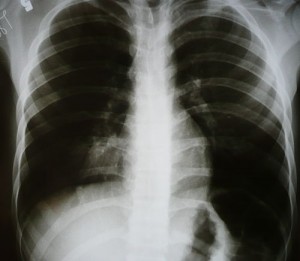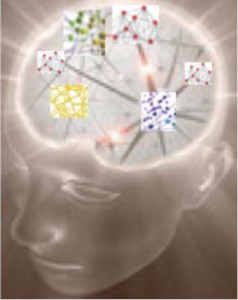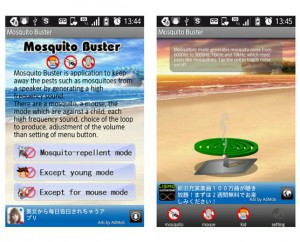Here once again is Vector’s take on some exciting trends we’ve been watching in the pediatric health arena and what we expect to see more of this year. If you’ve got others to propose, scroll to the bottom and let us know!
Whole-genome sequencing enters the clinic
In 2000, with our genome deciphered, the Human Genome Project promised to transform medicine, predicting and preventing all that ails us. The project spawned next-generation technologies, accelerated the development of bioinformatics and shaped new perspectives on research. But if, say, a stroke patient was asked the question, “Is your life any better than 10 years ago thanks to advent of genomics?” the answer would have to be “no.” Hence the New York Times’s assertion in 2010 that the project yielded few new cures.
Now that paradigm seems to be shifting. Whole-genome sequencing has begun moving into the clinic, sleuthing out problems, offering hope for a medicine that’s more effective and more personal. 2011 saw genomic information provide biochemical insights timely and actionable enough to improve the treatment of individuals with cancer and dystonia, and, in a case at Children’s, failure to thrive and severe kidney calcification. An increasing number of people are embracing genomic analysis – many of them with rare diseases, but others simply to advance the science or just for fun.
In 2012, as costs of genome sequencing fall further, we’ll increasingly be able to find needles by analyzing entire haystacks. Expect more focus on how to handle and interpret the flood of information and how to communicate it to patients.
Innovation meets healthcare reform
Just as environmental threats stimulate organisms to change and adapt (like bugs evolving resistance to new antibiotics), the political and economic pressure to cut costs is leading the healthcare system to innovate. It may be partially a survival move, but the emerging innovations in payment models, care coordination and care delivery are turning out to be big wins for patients. It’s hard to say what will happen in the legal and policy arena, with the Affordable Care Act going before the Supreme Court later this year, and what effect, if any, the new Occupy Healthcare movement may have. But experiments are rolling out anyway. Employers and empowered patients may be incentivized to vote with their feet and migrate toward care plans that offer innovations like virtual telehealth visits and medical homes.
The IBM-powered Masters Tournament website has inspired training modules that teach medical procedures remotely.
Global health: Medical missions give way to telemedicine
Doctors frequently go on medical missions overseas; Children’s alone has recently sent medical relief teams to Haiti, urologic surgeons to Kenya, cardiac surgeons to Ghana, and plastic surgeons to Chechnya. But what if doctors could be trained in new procedures or receive live or nearly-live guidance via telemedicine? As critical care physician Jeff Burns put it during a talk at IBM’s Impact 2011 Global Conference last April, “Ten million children under 5 die each year around the world from preventable causes. Can we use web-based technology to save some of them?”
With web-based modules and mobile technology, sharing medical expertise with someone in Africa isn’t much different from sending radiology images across town, and organizations such as Health eVillages are distributing technology to resource-poor areas. And that information exchange needn’t be just one way. “I know very little about malaria, and I’ve never treated Chagas disease, yet they afflict many children in the world,” Burns told the IBM audience. “When these children become dehydrated, what’s needed isn’t me out of Boston. It’s my colleagues in Bangalore who see 1,000 children a day.”
Timely diagnosis for behavioral disorders
Early intervention is one of our best tools for helping children with behavioral and learning disorders: Neuroscience shows that these interventions can help rewire young children’s more changeable brain circuitry, perhaps sparing children with conditions like dyslexia and attention deficit hyperactivity disorder (ADHD) from frustration and social isolation once they start going to school.
Unfortunately, these disorders are hard to spot early with behavioral criteria. Autism can’t be reliably be diagnosed before 18 months of age, dyslexia generally doesn’t become apparent until kindergarten or later, and behavioral criteria for ADHD are unreliable before age 8 or 9 – even as the American Academy of Pediatrics suggests considering drug treatment for ADHD as early as age 4. But what if there were an objective, unbiased test for these disorders? 2011 saw exciting steps in this direction.
Functional MRI studies were shown to pick up structural brain differences in 5- and 6-year-olds with a family history of dyslexia (watch for more on this soon). EEGs coupled with machine learning algorithms distinguished infants at high risk for autism from controls with 80 percent accuracy — at as young as 9 months of age. A study that’s still recruiting is comparing EEG activity and metabolic activity on fMRI in two groups of 3- to 7-year-olds with and without ADHD. Even newborns with a known neurologic insult are starting to be tracked over time with advanced neuroimaging, so their outcomes and the effects of early treatments can be better understood.
Digital health apps 2.0
The electronic revolution in healthcare continues, even as Google Health disbands. Mobile apps are growing exponentially, while the industry puzzles out which are worth investing in and waits for the FDA to weigh in. Techniques from gaming are motivating patients to take charge of their health. Medical records are starting to incorporate voice-to-text apps and user-generated content, helping physicians and patients track symptoms more easily and systematically, and incorporate this data into decision-making. Robotics and telehealth are allowing doctors to make virtual house calls to patients recovering from surgery. On the public health side, researchers are getting new insights into the population’s health behaviors by tapping Google searches. For more on the fast-moving digital health industry, read the coverage of this year’s Health 2.0 meeting (samples here and here). And read this disturbing report: Will electronic records and devices lead to distracted doctoring?
Repurposing medicines – finding new uses through mass screens
Getting a completely untested drug through FDA approval is a long, hard road. So researchers and pharmaceutical companies are increasingly repurposing medicines that have already been approved. Rapamycin is a great example of drug that is seemingly useful for just about everything, from immunosuppression to neurocognitive disorders to congenital heart defects. Using high-throughput assays, researchers are taking whole libraries of FDA-approved compounds, throwing them at new medical problems and finding new therapeutic “hits.” The FDA and private companies are lending a hand, and researchers at Stanford created a program that matches the gene activity caused by a disease with drugs inducing the opposite gene activity.
At Children’s, the screening platform of choice is increasingly zebrafish – fast-breeding creatures that are small enough to load into a 96-well plate, soaking up compounds through their skin. The transparent embryos provide a literal window into a drug’s effects. The fish are so useful that Children’s has developed and licensed a love tank that optimizes their breeding. In 2011, zebrafish led the way to an arthritis drug that may help treat melanoma and an asthma medication that may help restore muscle in Duchenne muscular dystrophy, sparking a collaborative research agreement with Pfizer. One compound — originally developed to fight stomach ulcers but then abandoned — is now helping boost stem cell engraftment in patients receiving cord blood after cancer chemotherapy.

Large outcomes studies are helping to reduce utilization of chest x-rays and other tests in pediatrics. (Nevit Dilmen/Wikimedia Commons)
Rethinking clinical practice pays off
Are we practicing too much defensive medicine and erring toward increased utilization, just to be on the safe side? If you’re a doctor, how tempting is it to “just get the CT scan” or admit a child to the hospital if he has a complex chronic health condition you’re not comfortable managing? Thoughtful clinicians are delving deeper into the question of why some patients are so frequently rehospitalized (one study last year found that patients readmitted four or more times in one year accounted for nearly 20 percent of all pediatric hospital admissions and one-quarter of inpatient expenditures). Many of these situations turn out to have actionable causes and can be turned around through simple preventive measures, as Atul Gawande compellingly detailed in the New Yorker.
Studies reviewing patient outcomes of large numbers of cases, like those by the Pediatric Emergency Care Applied Research Network, fueled new guidelines and decision rules that can safely reduce the use of medical tests, such as CT scans for children with head or blunt abdominal trauma or chest X-rays for children with suspected pneumonia. The SCAMPS program, launched hospital-wide at Children’s in 2011, allows physicians to continuously update their care algorithms based on patient outcomes, safely reduced cardiac testing in children with chest pain.
Making the flu less devastating
Flu for most people is an uncomfortable inconvenience, but it can cause serious problems. Researchers are getting a glimpse at why some people are particularly susceptible to flu, such as children with asthma, who often land in the hospital gasping for air. One ominous finding in 2011 was that otherwise healthy children carrying MRSA – which is becoming more prevalent in the community — were eight times more likely to die with influenza during the 2009 H1N1 flu pandemic. Influenza immunization (especially of preschoolers) is the best defense, but the need to update the flu vaccine every year, particularly when dangerous new strains appear, is a major challenge; in the 2009 pandemic, vaccine distribution was delayed. Scientists made progress last year toward a universal flu vaccine that targets parts of the virus that don’t mutate, a step in the right direction. But the year closed with the National Security Advisory Board asking the journals Science and Nature to omit certain details from pending flu research papers (describing creation of a highly transmissible form of avian flu) for fear of bioterrorism, sparking a debate about censorship of scientific communications.
Taking tissue engineering to the next level
We’ve gotten good at building basic tissues and even simple organs in the lab. But making complex engineered tissues that can perform biological functions that the body does naturally — “smart” tissues if you will — are only now emerging. Scientists are figuring out how to harness mechanical cues that induce cells to create multiple tissue types and three-dimensional organs on their own. Engineers are starting to incorporate nanotechnology to make heart patches that conduct electrical signals and beat as a unit, and fatty particles, filled with drugs, that can home to damaged tissue. Others are combining tissue engineering with gene therapy, creating tissues that can secrete desired compounds like protein drugs or factors that can kick-start regeneration within the body.
New pharma R&D models empower academic medical centers
Academic medical centers have always worked with the pharmaceutical industry, but never so closely as now. In the old model, industry drove therapeutic development. A company might fund an academic project or supply reagents, but the relationship generally ended with the project (and publication of a paper). Now, with drug pipelines drying up and R&D costs rising, big pharma is under pressure to change. New industry-academia collaborations have creative deal structures that are altering how both parties do business. They’re allowing hospital researchers to do what they’ve never done before – take the lead in R&D.
2011 saw a plethora of new industry-academic collaborations, and more are coming. Why? Academic medical centers have deep expertise in disease and the biology that underlies it, and a long-term commitment to finding cures – not to mention access to human tissue samples and to patients for clinical trials. We know what our patients need, and pharma is listening. Nowhere is this more apparent than for orphan diseases, where the medical need is great and where many of the ingredients for clinical trials in place.
The NIH just gave a great kickstart to therapeutic R&D with the National Center for Advancing Translational Sciences (NCATS) launched last month. When all parties’ interests are strategically and tactically aligned, it’s a beautiful thing.















